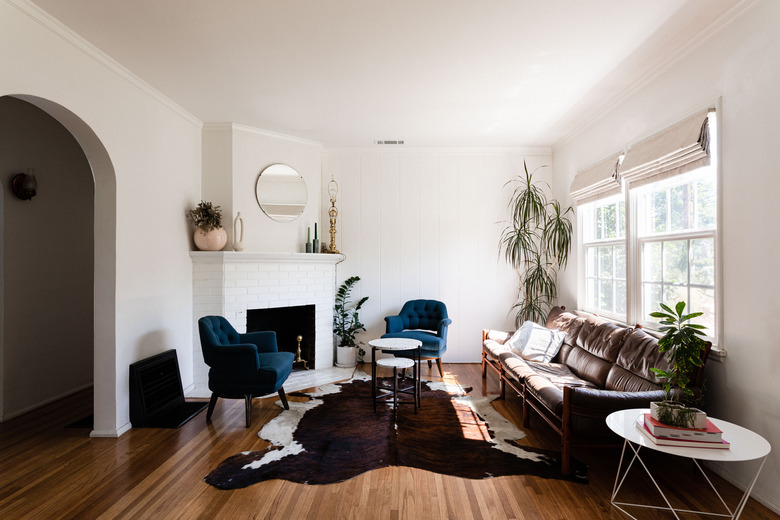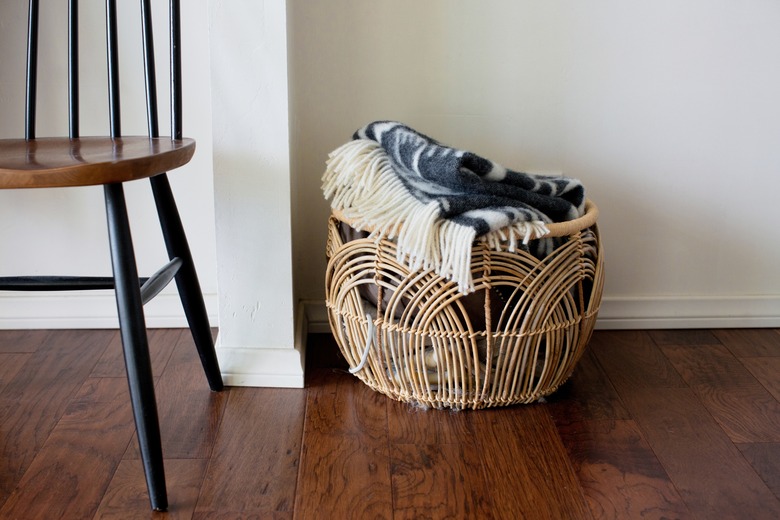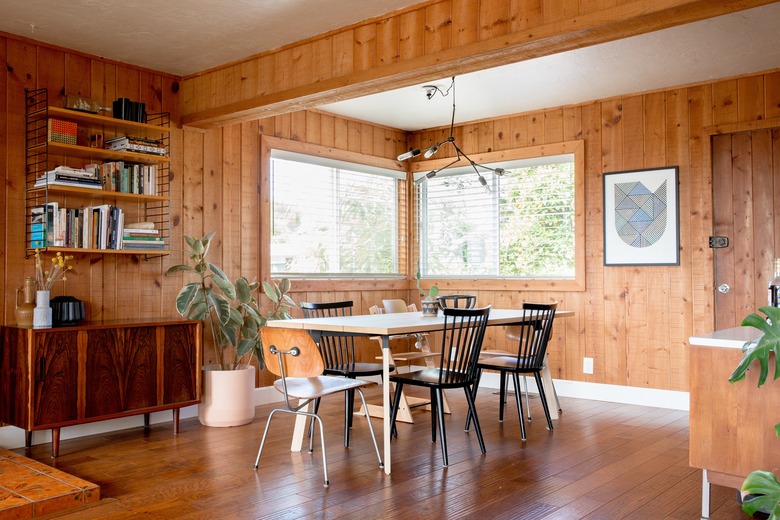Best Wood Flooring: A Homeowner's Guide
When it comes to flooring options, none draw the delight that wood does. Versatile, timeless and full of character, wood floors are easy to love. However, determining which type is best for your home can also be overwhelming. Whether you're renovating an old room or building your dream house from scratch, learning more about the ins and outs of wood can help you find the flooring options that are perfect for you.
Prefinished vs. Unfinished
Prefinished vs. Unfinished
One of the first decisions you'll make when choosing wood flooring is the choice between prefinished and unfinished wood. Both have advantages and disadvantages, so it can help to break down your needs, style and budget to figure out what will work best with your home:
- Installation: One of the biggest differences between prefinished and unfinished wood is the installation time. Unfinished hardwood flooring installation requires on-site sanding, staining and finishing. The process can take weeks and can emit fumes into the air that are unpleasant to live with during a renovation process. Prefinished flooring, on the other hand, is completely finished in a factory, and the installation process typically involves simply nailing or gluing it to a subfloor, while some types can be installed as a floating floor, with no attachment to the subfloor. The floor often can be completed within hours and can be walked on immediately (or when the glue has cured), making it a popular option for people renovating as part of a home improvement project.
- Customization: Some people are willing to endure the longer and costly installation process because the on-site process makes unfinished wood highly customizable. If you have a specific vision in mind, you can work with skilled installers to sand, stain and finish the wood in exactly the color and feel of your dreams for a truly one-of-a-kind floor.
- Cost: Prefinished wood costs more up front since so much extra work is done in the factory, but unfinished floors don't always wind up being cheaper. Labor costs add up quickly, especially if it takes professionals weeks to install unfinished floors. For this reason, unfinished floors can be more expensive than prefinished, especially if you opt for a highly customized finish or have a large room or home to cover. For smaller rooms or standard finishes, though, unfinished flooring can still come in a little under the cost of prefinished floors. Attempting a DIY job can cut down on those labor costs, but between the equipment needed and the skill level required, it's not a project for beginners.
- Foot traffic or pets: Prefinished flooring can come with coats of aluminum oxide that have been UV-cured, which is an option unavailable for on-site finishing. This makes it the superior option if you have pets or young children or if you are installing wood in areas you fear will be prone to nicks and scratches.
Engineered vs. Solid Wood Flooring
Engineered vs. Solid Wood Flooring
Once you've decided between prefinished and unfinished wood, you'll have to make a decision about the construction of the flooring. There are two choices: engineered and solid wood.
With solid hardwood flooring, each plank is a single, solid piece of lumber. Solid hardwood floors are often a great long-term investment. If you live in an older home with wood flooring that was installed decades or even centuries ago, it is almost certainly solid hardwood. Among the same wood species, solid hardwood flooring is the more expensive option, though engineered wood of an exotic wood like Brazilian cherry will usually cost more than solid wood in a common domestic wood like white oak.
In recent years, engineered wood flooring has become more popular. Engineered hardwood is still 100 percent real wood, and the top layer is made of whatever type of wood species and finish you choose. Beneath that, though, is often a plywood-like material composed thin layers of real wood sandwiched with cross-grain configuration (where each layer's grain is perpendicular to the grain of the adjacent layers) to make the planks more resistant to temperature and moisture damage like buckling. In addition to being a more affordable option, engineered wood flooring is a good choice for homes or rooms that are prone to high humidity and moisture.
Finishes for Your Hardwood
Finishes for Your Hardwood
Wood floors must be finished in order to help protect them from moisture, dirt, sunlight and wear. The finish will have an impact on the final look of your wood and will contribute to its overall luster and color. There are a few different options for finishes that depend on your needs and whether you've chosen prefinished or unfinished floors.
One of the biggest concerns when applying a finish aside from appearance and durability is the level of what the Environmental Protection Agency calls volatile organic compounds, or VOCs. Household and hardwood flooring products like paints, aerosol sprays and varnishes usually have some level of VOCs, and exposure to harmful amounts of them can result in symptoms like eye irritation, headaches, nausea and damage to organs like your kidneys or liver.
Once a finish is cured, the VOCs aren't a concern. It can take days or weeks to cure, so some finishes require that you leave the house for at least two weeks during the installation process or will require methods of extra ventilation or safety precautions during installation that could up your overall costs. It's just one of the factors to consider when deciding between these common finishes:
- Oil-based polyurethane: Super durable, easy to clean and available in a variety of lusters from high gloss to satin, this is a popular and affordable option. This finish often has a bit of amber tint to it, which some homeowners love since it can add warmth to cooler tones of wood. However, oil-based polyurethanes have a high level of VOCs, and the fumes can be quite noxious during the curing process.
- Water-based polyurethane: Still super durable but without the high level of VOCs, this is becoming the more environmentally conscious polyurethane option. It also dries quicker and clearly without the yellowish tint of an oil-based polyurethane if you are looking for a finish that maintains the wood's natural color. It is more expensive than oil-based
polyurethane. - Aluminum oxide: Only available on prefinished floors, this is a super durable and scratch-resistant option that's best for people with pets. It also comes in a variety of glosses, from high gloss to matte. The main downside is that since it comes prefinished, you'll need to call in professionals if you want to touch up the floors or do a refinishing job.
- Acid-cured: Also known as a Swedish or conversion finish, this is considered the top of the line for site-applied finishes. That also makes it the most expensive, but if your budget can cover it, the price is often worth it thanks to the level of durability and scratch resistance. This is also a great option if you've chosen a high-quality or exotic wood with detailed patterns or knots because it's one of the best at protecting wood while also allowing its natural beauty to shine. The downside is that it can only be applied by professionals, and thanks to its high level of VOCs and flammability, it can be days or weeks before the floors can be used regularly.
- Wax: While more homeowners choose polyurethane for hardwood floors these days, wax has been a staple in the hardwood finish industry for decades and continues to be widely used. It's great at maintaining the color of the wood without making it too shiny or lustrous and is easy to use in small amounts for repairs. However, because it's less durable than other options, it requires far more upkeep, including the possibility of new wax jobs every few years.
Deciding on Width
Deciding on Width
Wood planks come in a variety of lengths and widths, and the best one for you will depend mostly on two factors. The first is your personal preference. Though wood floors have a timeless charm, certain plank widths have gone in and out of vogue for different styles of homes throughout the years.
Right now, wide planks — meaning planks that start around 5 inches and can go as wide as around 12 inches — are gaining popularity, especially in homes that have a rustic feel, such as restored farmhouses, relaxed living rooms or contemporary open-plan office spaces. Each plank has more space to show off the beauty of the natural wood, which sometimes means showing more grains, knots and imperfections.
Narrow-plank flooring includes planks that are anywhere from 2 inches to about 4 1/2 inches. Sometimes made to show fewer imperfections and often longer in length, these are popular among people who want a more polished and elegant feel. If you're not sure which you prefer, working with a contractor who can show you several examples of different widths or checking out design catalogs can help you figure out your favorite looks.
The second factor to consider when determining width is moisture or humidity. If you live in an especially humid climate or are looking to install wood flooring in a room prone to wet spills, such as a kitchen, know that wide planks are going to be far more susceptible to the warping that water damage causes. If you love the look of a wide plank, though, don't worry. Opt for engineered wide planks, as they can withstand humidity better than solid wood. Additionally, you can take measures including acclimation during installation to minimize the potential for damage.
Janka Rating and Wood Species
Janka Rating and Wood Species
When it comes to durability, each wood species undergoes an impact test to determine how well it can hold up against heavy weight. It's then given a rating on the Janka scale. The higher the number, the better it can hold up against heavy furniture or other possible contributors to dents. Tiny TIMBERS provides a detailed Janka ratings chart.
Typically, any Janka rating from about 950 to 1,500 is considered in the normal range for unfinished hardwood floors. Red oak is often considered the median with a Janka rating of 1,290. Other common North American woods in that normal range include teak, yellow birch, white ash and white oak. These woods are durable enough to withstand some heavy objects but not so hard that it can't be easily worked with during the installation process.
Woods on the more extreme ends include pine, which is considered soft with a Janka rating of 480, or Brazilian cherry, which is considered hard with a Janka rating of 2,820. Softer woods are found more commonly in wood furniture since they don't have to withstand as much impact as floors, and harder woods like hickory, Brazilian cherry and santos mahogany are more expensive not just because they are less common but also because they are harder to work with for flooring manufacturers.
However, in recent years, advances in engineered and prefinished floors have made a wider variety of woods available as flooring. If you love the look and feel of a certain type of wood but are worried that it will be either too hard or not durable enough for your needs, you can always work with a professional to talk about your options for engineering, construction and heavy-duty sealants that will work to keep your favorite wood species able to withstand the elements and look great for decades to come.
References
- Floor Critics: Hardwood vs Engineered Hardwood Flooring
- MacDonald Hardwoods: 5 Hardwood Finishes that Will Look Amazing on Your Floor
- Environmental Protection Agency: Volatile Organic Compounds' Impact on Indoor Air Quality
- Art From Nature: Does Hardwood Floor Hardness Matter?
- Tiny TIMBERS: Janka Hardness Rating


